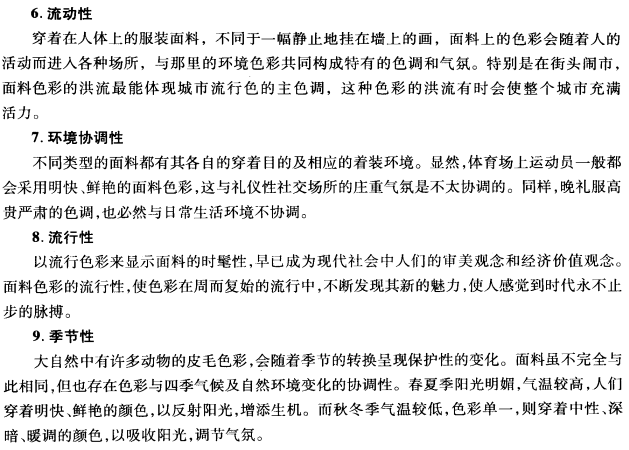Fabrics use the rules of modeling beauty and craftsmanship skills to synthesize points, lines, and surface shapes into a complete image. However, it is not a pure work of plastic art after all, and the color of the fabric is also obviously different from the color of the art work. Fabric colors have their own particularities, which are summarized below. 1. Social symbolism: The color of fabrics strongly reflects the characteristics of the times and society to some extent. As individuals in society, their choice of fabric color, while being restricted and influenced by social morality, culture, and fashion, will inevitably reflect their respective social status and mental outlook. Therefore, fabrics are not only a necessity in personal life, but also the color of fabrics has long become a symbolic mark of their identity. 2. Decorative fabric color belongs to the category of decorative colors. Here, the objects of decoration are people, and they have very different personalities. Color must first be based on the image of a person, using a relatively abstract technique to express a certain decorative interest. Therefore, the fabric color must be designed “differently from person to person” and cannot be used at will or even “imposed” based on the designer’s subjective interest. 3. Practical functionality Fabrics are artistic and practical products, and of course their color should also consider practical functionality. For example, for the same uniform, the colors of the civilian police and the army are obviously different. To serve as a warning, traffic signs should use eye-catching colors. In order to conceal themselves, infantrymen need to use neutral green protective colors. Printing and dyeing workers wear dark overalls to resist stains.” 4. Less Color We can use countless colors to depict an oil painting and many colors to draw a decorative painting, but the more colors the better when designing fabrics. .In order to achieve a simple and smooth overall effect, it is generally enough to use up to four or five colors. Too many colors are often counterproductive. 5. Three-dimensional colors are attached to the fabric through printing, dyeing, weaving and other processes. , as the clothing made of fabrics is put on the human body, the color of the fabric changes from a flat state to a three-dimensional state, and people can also appreciate it from various angles and different directions. Therefore, when designing fabric color, you cannot just When considering the decorative effect on the front, you must also pay attention to the color treatment on the sides and back, and take care of the visual balance from every angle so that it can always maintain an overall coordinated feeling.
AAA anti-UV fabric mesh GFREGRTTHR
Characteristics of Fabric Color Composite Fabric Information
Fabrics use the rules of modeling beauty and craftsmanship skills to synthesize points, lines, and surface shapes into a complete image. However, it is not a pure work of plastic art after all, and the color of…
This article is from the Internet, does not represent Composite Fabric,bonded Fabric,Lamination Fabric position, reproduced please specify the source.https://www.yjtextile.com/archives/35614






